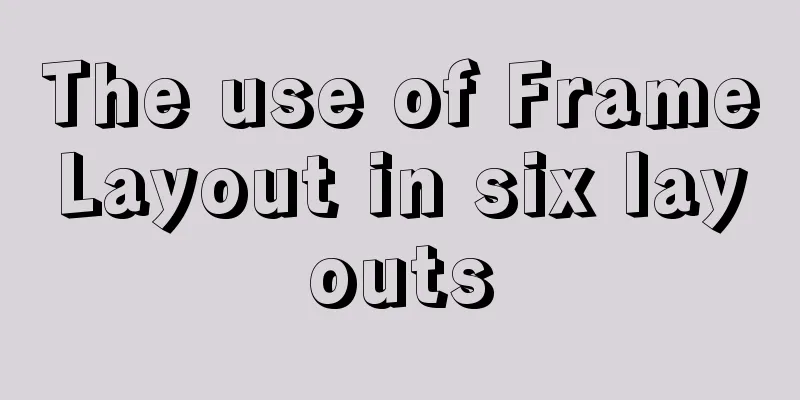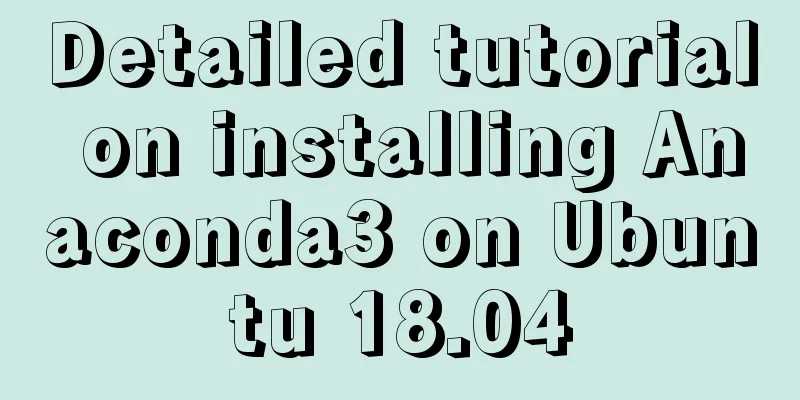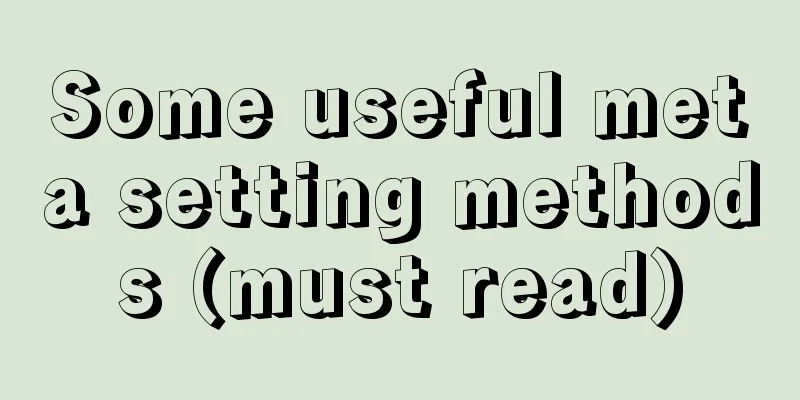The use of FrameLayout in six layouts

|
Preface In the last issue, we explained LinearLayout to you. In this issue, we will explain the use of FrameLayout. Compared with other layouts, FrameLayout can be said to be the simplest one, and its scope of use is relatively small, but it is also one of the six major layouts in Android. You will still encounter it during the interview, so let's start learning quickly~ Introduction In FrameLayout, this layout directly opens up a blank area on the screen. All views added to this layout are displayed in a stacked manner, and it will place these views in the upper left corner of this area by default. The first view added to the layout is displayed at the bottom, and the last one is placed at the top. The views of the previous layer cover the views of the next layer, so the layout is similar to a stack layout, which is why FrameLayout is less used. 1. Common attributes There are only two common attributes of FrameLayout: Two properties:
Foreground image: It is always at the top of the frame layout, directly facing the user, and is the image that will not be covered. Some of you may be confused about this explanation, so let us use actual operations to let everyone intuitively feel what it means!
In the picture above, we can see that background, as the name implies, is to set the background. So what is the foreground? I believe that my friends already have some ideas. Let's continue to look down.
I believe that after reading the above picture, you have completely understood what the foreground image is. The same code just changes the background to the foreground. It can be clearly seen that HelloWord can still be seen in Figure 1, but in Figure 2, it has been blocked. We can understand it simply like this: foreground is actually the cover of a book, which covers all the contents of the book. 2. How does FrameLayout set the position of its subviews (such as TextView)? Set the value through layout_gravity, and then set the position with layout_marginTop and layout_marginLeft. For example, there are 4 TextViews: the first layer is the company, the second layer is the office, the third layer is the workstation, and the fourth layer is the programmer. If the position of TextView is not set, the four words will be displayed in the upper left corner by default, with the company at the bottom and the programmer at the top. To achieve the position effect of the four pictures in the figure, the corresponding settings are as follows: (1) First layer company: android: layout_gravity="center" (2) Second-layer office: android: layout_gravity = "center" android:layout_marginTop="-150dp" (Note: This is a negative number because android:layout_gravity = "center" means centering in the horizontal and vertical directions. The baseline is the midpoint of the view in the horizontal and vertical directions. Since the office is above the baseline (negative direction), it is a negative number) (3) Third level: android:layout_gravity="top" android:layout_marginTop="40dp" android:layout_marginLeft="40dp' (Note: android:layout_gravity="top" means vertical top alignment, while horizontal alignment is left alignment by default) (4) Fourth-level programmers: android:layout_gravity="center" android:layout_marginTop="80dp" (corresponding to the analysis of the second-level office, it is easy to understand that the programmers are below the baseline (positive direction), so the number is negative. And note: the baseline here is not the top of the screen, but the center line of the horizontal and vertical directions respectively) The final effect is as follows:
Conclusion This is the end of the introduction to FrameLayout. Some of you may think that today's article does not contain too much content, mainly because FrameLayout is rarely used in actual projects, so everyone just needs a brief understanding of it. but! ! ! It has been a week since we started learning together. I believe there are still a few students who have not created their first project yet, so I hope you will take action quickly and write all the wonderful content of this week into your first personal demo. Friends who have been following us in actual practice, I hope you can also review the previous articles. Confucius said: "Isn't it a pleasure to learn and practice it from time to time?" ~ The above is the full content of this article. I hope it will be helpful for everyone’s study. I also hope that everyone will support 123WORDPRESS.COM. |
<<: How to use docker to deploy spring boot and connect to skywalking
>>: Detailed explanation of two quick ways to write console.log in vscode
Recommend
We're driving IE6 to extinction on our own
In fact, we wonder every day when IE6 will really...
Differences in the hr separator between browsers
When making a web page, you sometimes use a dividi...
Detailed explanation of the reasons and solutions for Docker failing to start normally
1. Abnormal performance of Docker startup: 1. The...
How to write high-quality JavaScript code
Table of contents 1. Easy to read code 1. Unified...
Tips on HTML formatting and long files for web design
<br />Related articles: 9 practical suggesti...
Alibaba Cloud Centos7.3 installation mysql5.7.18 rpm installation tutorial
Uninstall MariaDB CentOS7 installs MariaDB instea...
Four ways to combine CSS and HTML
(1) Each HTML tag has an attribute style, which c...
How to use CocosCreator to create a shooting game
Analyze the production steps: 1. Prepare resource...
About the layout method of content overflow in table
What is content overflow? In fact, when there is ...
Two common solutions to html text overflow display ellipsis characters
Method 1: Use CSS overflow omission to solve The ...
Example code of vue custom component to implement v-model two-way binding data
In the project, you will encounter custom public ...
Detailed explanation of sample code for the improvement and changes brought by CSS variables to JS interactive component development
1. Qualitative changes brought by CSS variables T...
HTML line spacing setting methods and problems
To set the line spacing of <p></p>, us...
Installation steps of docker-ce on Raspberry Pi 4b ubuntu19 server
The Raspberry Pi model is 4b, 1G RAM. The system ...
Installation steps of mysql under linux
1. Download the mysql tar file: https://dev.mysql...












